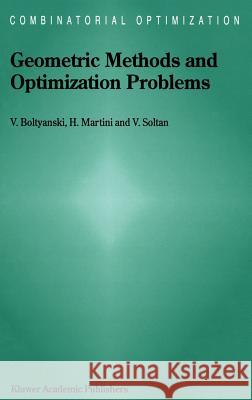Geometric Methods and Optimization Problems » książka
Geometric Methods and Optimization Problems
ISBN-13: 9780792354543 / Angielski / Twarda / 1998 / 432 str.
VII Preface In many fields of mathematics, geometry has established itself as a fruitful method and common language for describing basic phenomena and problems as well as suggesting ways of solutions. Especially in pure mathematics this is ob- vious and well-known (examples are the much discussed interplay between lin- ear algebra and analytical geometry and several problems in multidimensional analysis). On the other hand, many specialists from applied mathematics seem to prefer more formal analytical and numerical methods and representations. Nevertheless, very often the internal development of disciplines from applied mathematics led to geometric models, and occasionally breakthroughs were b ed on geometric insights. An excellent example is the Klee-Minty cube, solving a problem of linear programming by transforming it into a geomet- ric problem. Also the development of convex programming in recent decades demonstrated the power of methods that evolved within the field of convex geometry. The present book focuses on three applied disciplines: control theory, location science and computational geometry. It is our aim to demonstrate how methods and topics from convex geometry in a wider sense (separation theory of convex cones, Minkowski geometry, convex partitionings, etc.) can help to solve various problems from these disciplines.











